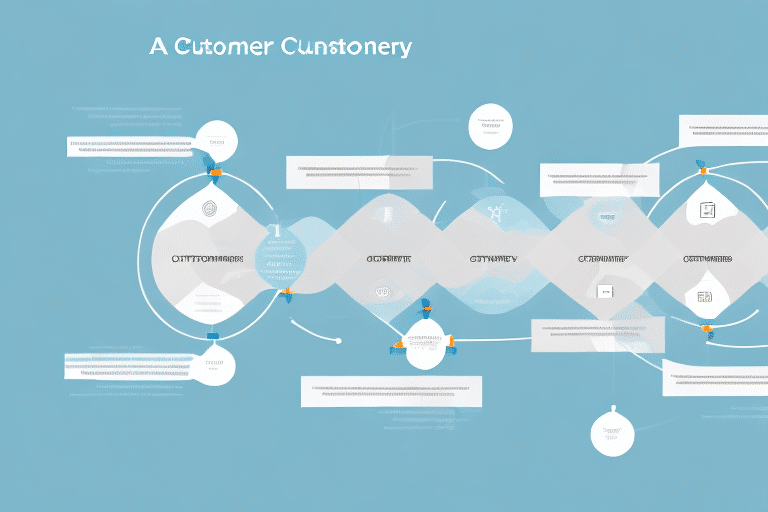Maximizing Customer Retention in Marketing Strategies
In today's competitive business landscape, customer retention has emerged as a critical component of successful marketing strategies. While acquiring new customers is essential, retaining existing ones can lead to sustained growth and profitability. This article delves into the benefits of customer retention, factors influencing retention rates, and effective strategies to enhance customer loyalty.
Importance and Benefits of Customer Retention
Customer retention refers to a company's ability to keep its customers over a specified period. According to a study by Bain & Company, increasing customer retention rates by just 5% can boost profits by 25% to 95% (Bain & Company). Retaining customers not only reduces the costs associated with acquiring new customers but also fosters a loyal customer base that can drive repeat business and referrals.
Enhanced Revenue and Profitability
Loyal customers tend to spend more over time. Research indicates that increasing the average customer lifespan by just a few years can significantly increase a company's revenue (Forbes).
Positive Word-of-Mouth Marketing
Satisfied customers are more likely to recommend a business to others, thereby reducing the need for extensive spending on advertising and facilitating organic growth.
Cost Analysis: Customer Acquisition vs. Retention
Acquiring new customers typically involves higher costs compared to retaining existing ones. The Harvard Business Review reports that acquiring a new customer can cost up to five times more than retaining an existing customer (Harvard Business Review). Focusing on retention strategies can lead to cost savings and a higher return on investment.
Key Factors Influencing Customer Retention
Several elements play a pivotal role in determining customer retention rates:
- Quality of Product or Service: Consistently high-quality offerings meet or exceed customer expectations.
- Exceptional Customer Service: Responsive and helpful customer support fosters trust and satisfaction.
- Personalization and Customization: Tailoring experiences and offers to individual customer preferences enhances loyalty.
- Building Trust and Credibility: Transparent practices and reliable performance build long-term trust.
- Competitive Differentiation: Unique value propositions set a business apart from competitors.
Strategies to Enhance Customer Retention
Creating a Customer-Centric Marketing Strategy
Developing marketing strategies that prioritize the customer's needs and preferences leads to more effective engagement. Utilizing data analytics to understand customer behavior enables businesses to tailor their campaigns accordingly (Smart Insights).
Delivering Exceptional Customer Service
Providing timely and effective customer service can significantly impact retention. Training employees to handle inquiries and complaints professionally ensures that customers feel valued and heard.
Implementing Personalization and Customization
Personalizing communication and offers based on customer data increases relevance and engagement. Tools like CRM systems can help in delivering personalized experiences (Salesforce).
Leveraging Data Analytics
Data analytics tools allow businesses to monitor customer behavior, identify trends, and anticipate needs. This proactive approach aids in addressing potential issues before they lead to customer churn (SAS).
Implementing Effective Communication Strategies
Regular communication through various channels keeps customers informed and engaged. This includes newsletters, social media interactions, and personalized emails.
Using Incentives and Rewards Programs
Rewarding loyal customers with discounts, exclusive offers, or loyalty points encourages repeat business and fosters a sense of appreciation.
Addressing Customer Complaints and Feedback
Actively seeking and addressing customer feedback demonstrates a commitment to satisfaction and provides opportunities for improvement.
Measuring Customer Retention Metrics
Tracking key performance indicators (KPIs) related to customer retention is essential for evaluating the effectiveness of retention strategies. Common metrics include:
- Churn Rate: The percentage of customers who stop using a product or service during a given period.
- Customer Lifetime Value (CLV): The total revenue a business can expect from a single customer account.
- Customer Satisfaction Score (CSAT): A measure of customer satisfaction with a product or service.
Regularly analyzing these metrics enables businesses to make informed decisions and continuously refine their retention strategies.
Conclusion
Maximizing customer retention is vital for sustainable business success. By understanding the importance of retention, analyzing the costs associated with customer acquisition, identifying key factors that influence loyalty, and implementing effective retention strategies, businesses can foster a loyal customer base that drives growth and profitability. Continual measurement and adaptation of these strategies ensure that businesses can respond to evolving customer needs and maintain a competitive edge in the market.




















